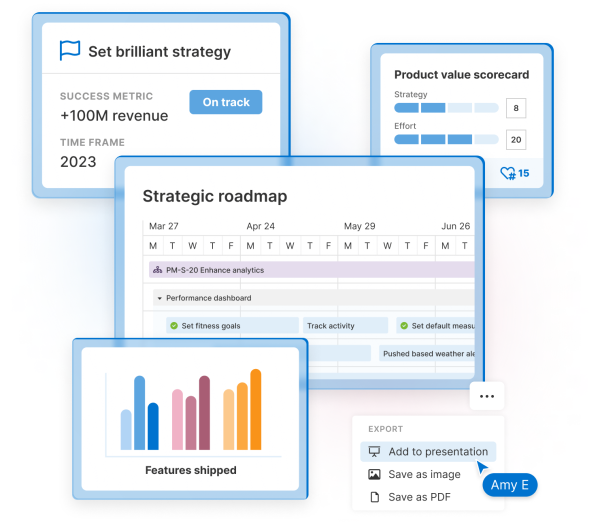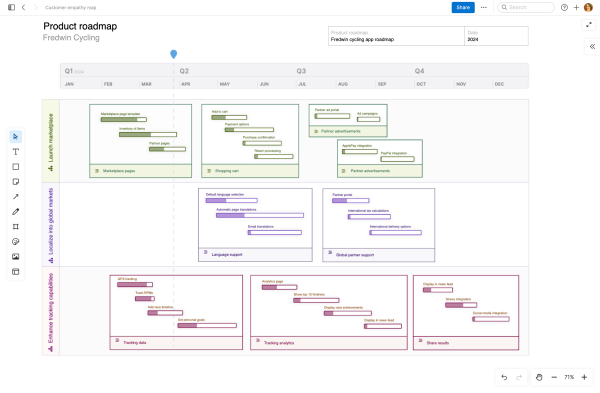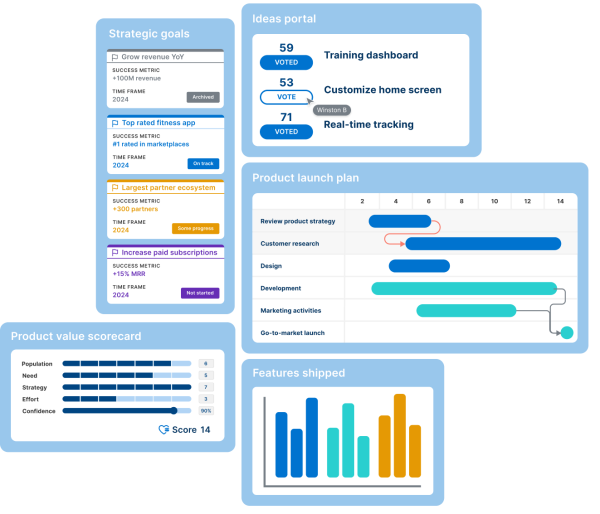An introductory guide to agile project management
Last updated: March 2024
Agile is rooted in software development. But anyone can adopt this way of working (product management and marketing teams often do). Project managers who take an agile approach still handle typical project management activities — such as defining project objectives, schedules, and scope; managing resources and risk; and cross-functional communication. It is how you approach these tasks that makes things "agile."
For example, instead of planning an entire project upfront from start to finish, agile projects are often broken down into sprints where work is prioritized in increments. This allows for quick iterations and constant feedback.
What is agile project management?
Agile project management involves applying agile principles to project management work. This approach emphasizes continuous improvement, flexibility through iteration, and regular incorporation of stakeholder feedback. In project management, these stakeholders are typically internal customers — including product managers, developers, program managers, and leadership. The goal is to effectively manage resources and timing throughout the project lifecycle, all while improving collaboration and the ability to respond quickly to change.
Deliver agile projects on schedule with Aha! software — try it free.
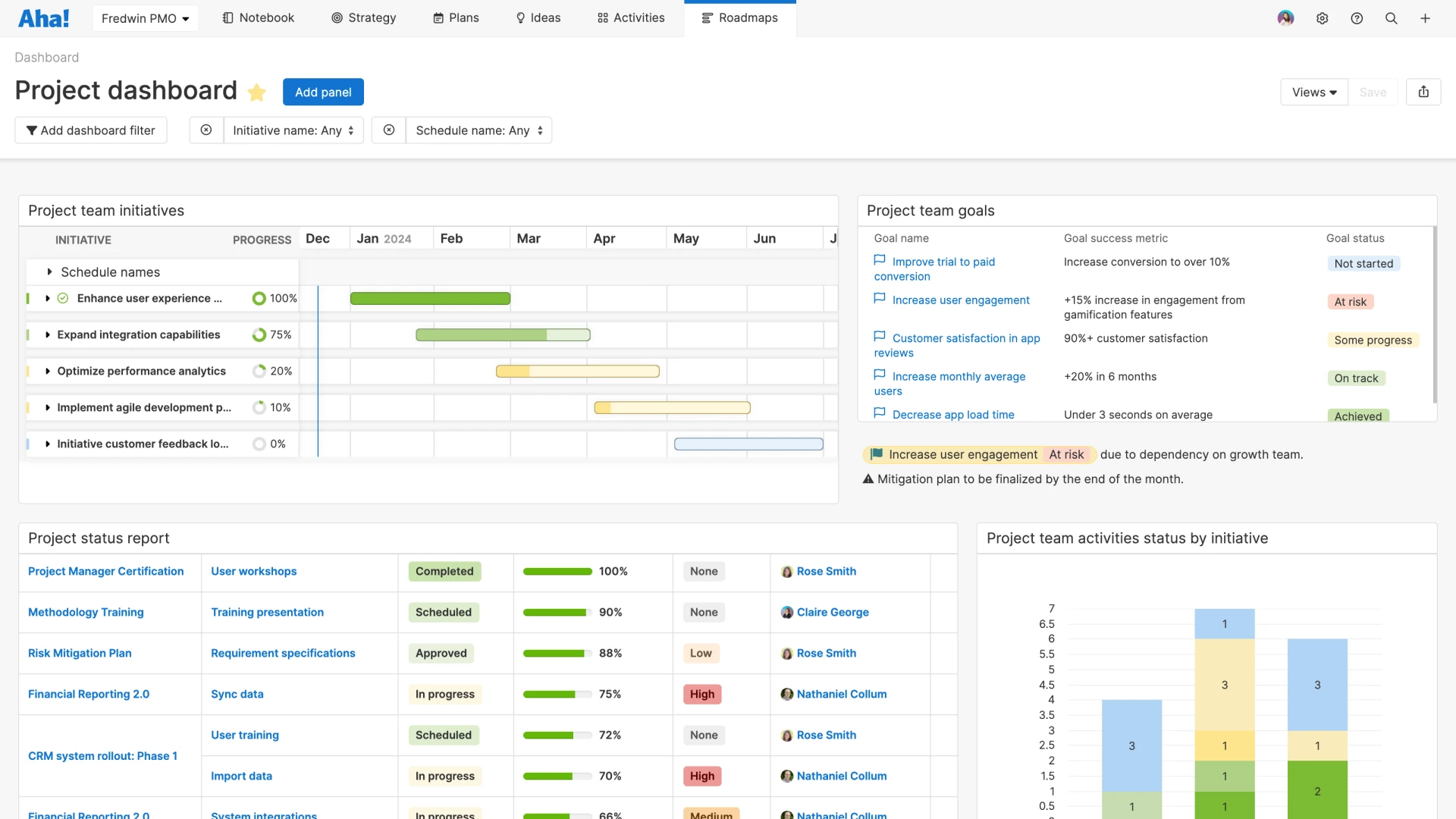
Plan and track project completion with an in-depth dashboard in Aha! software.
Whether you are looking to bring more agile practices into your role as a project manager or are part of another function that works closely with an agile project management team, this guide can help you learn the fundamentals. Use the following links to jump ahead to a specific section:
Where does agile project management come from?
The history of agile can be traced back to the 1940s. But agile development as we know it today got its beginnings in the early 2000s when a group of software engineers met to define a more flexible and iterative way of working. They outlined 12 core principles in the Agile Manifesto — which became the basis for many different agile methodologies.
Related:
Agile appealed to many engineering teams that sought a less rigid, traditional approach to development. As its popularity grew, people began looking for ways to apply these principles to other disciplines. And with its similar history of fixed linear workflows, project management presented a prime opportunity for "going agile."
Agile vs. waterfall project management
Agile project management emerged as an alternative to the traditional waterfall approach. In general, waterfall projects stick to a pre-planned schedule. Work items cannot progress to the next phase until the prior one is complete.
Depending on the nature of a project, waterfall methodology can still be beneficial. This is particularly true for projects involving repeatable processes with fewer stakeholders, or within highly regulated industries (such as government and healthcare) that demand stringent technical documentation and adherence to standards.
Agile provides a radically different project management style — giving you the ability to adapt plans after a project is underway. Because it encourages flexibility, agile is often preferred by software companies that have to respond quickly to rapidly changing markets, customer preferences, and advancements in technology.
Both methods have their benefits. That is why many organizations use both in different scenarios or a blend of the two (sometimes referred to as "wagile.") Taking a hybrid approach is one way to be more agile while retaining some predictability.
You can decide when to lean more agile or waterfall in your approach. Here is a brief overview of how the two types of project management compare:
Project management component | Agile project management | Traditional or waterfall project management |
Overall approach | Iterative, incremental, and collaborative | Sequential, predictable, and pre-planned |
Goals | Responding to changes quickly while delivering outcomes that provide value to stakeholders | Delivering a completed project with adherence to the initial plan |
Roles | Project managers work with cross-functional teams — roles might vary by organization. | Distinct roles are outlined (e.g., project manager, developer, tester). |
Stakeholder involvement | Regular stakeholder collaboration throughout the project | Stakeholder involvement mainly at the beginning and end of the project |
Change management | Changes are embraced and implemented throughout the project. | Changes are difficult to implement after the project has started — they require a formal request and approval. |
Risk management | Risks are identified and addressed continuously. | Risk management occurs primarily at the beginning of the project. |
Testing and quality assurance | Continuous testing | Testing is conducted after the development phase is complete. |
Project delivery | Deliverables are shipped in short cycles or sprints. | The final result is delivered at the end of the project. |
Related:
Benefits of agile project management
Adopting an agile approach certainly takes a shift in mindset. But there are good reasons so many project managers make this shift:
Flexibility: Adaptability is prioritized over rigid plans, allowing adjustments to align with changing business needs and market trends.
Reduced risk: Breaking projects into smaller parts and frequent testing minimizes the impact of roadblocks or dependencies, keeping projects on track.
Transparency: Regular meetings (such as daily standups and sprint reviews) promote open communication, building team alignment on progress and goals.
Productivity: Prioritizing the most impactful projects and frequent deliverables enables agile teams to navigate large efforts more efficiently.
Stakeholder alignment: Agile project management actively involves stakeholders throughout the project lifecycle — inviting and incorporating feedback along the way.
Continuous improvement: Retrospectives help teams learn from past projects and commit to making incremental positive changes.
Examples of agile project management
Agile project management sounds great in theory. And in practice, it often is. But what does this actually look like?
In agile project management, work progresses through similar phases that are established in waterfall project management — though the phases might be more fluid (perhaps ironically). Let's look at some examples of agile project management through that lens:
Project management lifecycle phase | Agile project management example |
Initiation |
|
Planning |
|
Launch |
|
Performance |
|
Closure |
|
In the image below, you can see an example of a strategic project roadmap created in Aha! Roadmaps. As an agile project manager, you might build a view like this during the planning phase to help see your project progress through launch and all the way to closure.
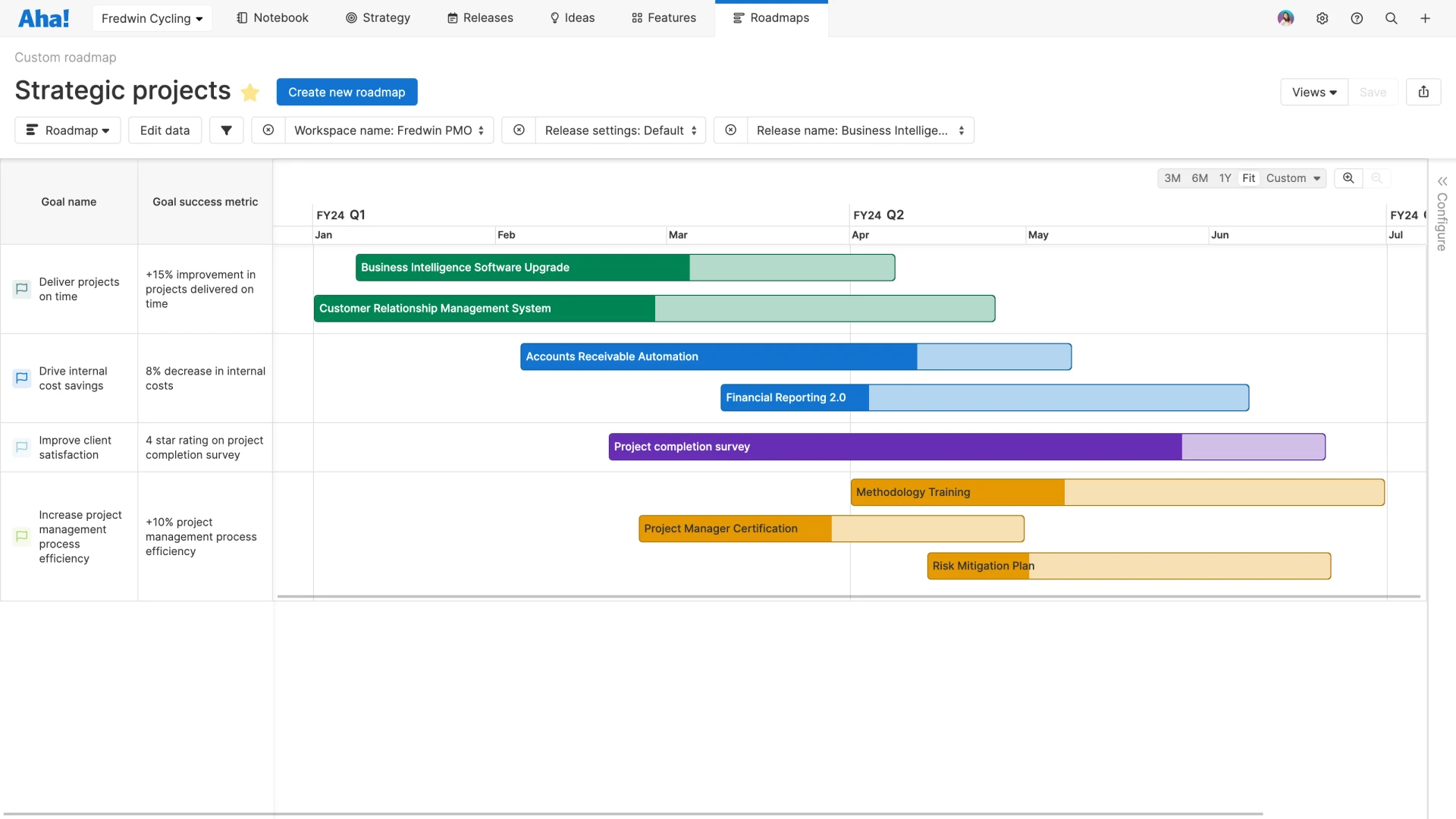
Project and product management are two of the most commonly confused roles in product development. This is exacerbated by the fact that the two functions work closely together, and sometimes overlap — in some organizations, product managers cover both areas of responsibility. But in larger organizations, project management can be a separate role within a core product development team (or adjacent team).
This confusion is prevalent whether you practice agile project management or not. So let's walk through some high-level distinctions. Product managers focus on the "why" and "what" of product development. They own the product strategy, prioritize ideas and features, and lead go-to-market launches. A project manager's focus is on the "how" and "when" of different efforts. They oversee the financial details, help alleviate problems and roadblocks, and maintain status updates for stakeholders. (Note that developers also look at the "how", but on a technical level).
Both functions participate in cross-functional meetings and communicate with leadership. In an agile environment, both must also commit to being responsive to change and open to improvement — agile works best when everyone buys into it.
Related:
Agile project management tools
You can find plenty of dedicated tools for project management on the market. The best ones should help you track project progress from initiation to closing, monitor resource allocation, and easily share reports and documentation with stakeholders.
In terms of specific functionality, we suggest you look for the following in your agile project management software:
Goal and initiative tracking
Customizable statuses, workflows, and templates
Gantt-style, calendar, and project roadmap views
Resource and capacity management
Integrations with agile development tools (e.g., Aha! Develop, Jira)
Workflow boards for sprint planning
Shareable reports and presentations
Many project managers use Aha! Roadmaps to plan and deliver successful project outcomes. (No surprise, as it includes all of the functionality listed above.) Our roadmapping software was originally developed for product managers. But it also offers the same benefits of visibility, efficiency, and collaboration for project and program managers. Plus, using the same software as your product team reduces the need for back-and-forth between separate tools — helping you stay close to work-in-progress.
Agile project management templates
To help you get started quickly, we have a number of templates for project management available in Aha! software. Check out the top ones below:
Stakeholder map template
Identify key stakeholders for any project — including their impact and level of influence on its outcome — with a stakeholder map template. It can help you manage relationships throughout the agile project management lifecycle.
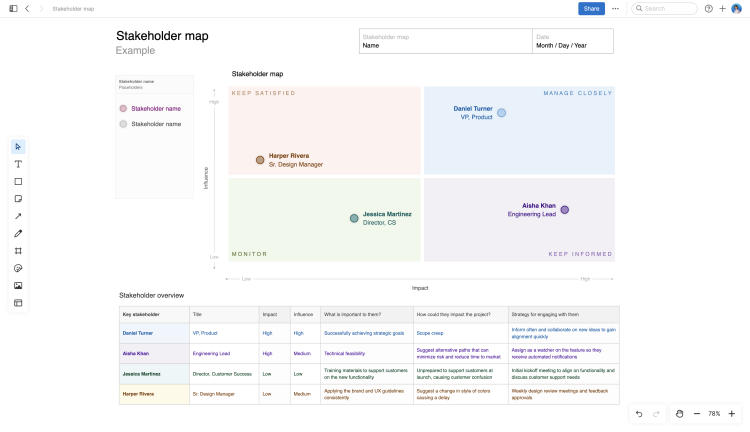
Change log template
Agile project management encourages a flexible response to change. But it is still important to pause and consider the reasoning behind any changes and have a record of them — so information does not get lost as things evolve. Try a simple change log template to keep track of what was updated and why.
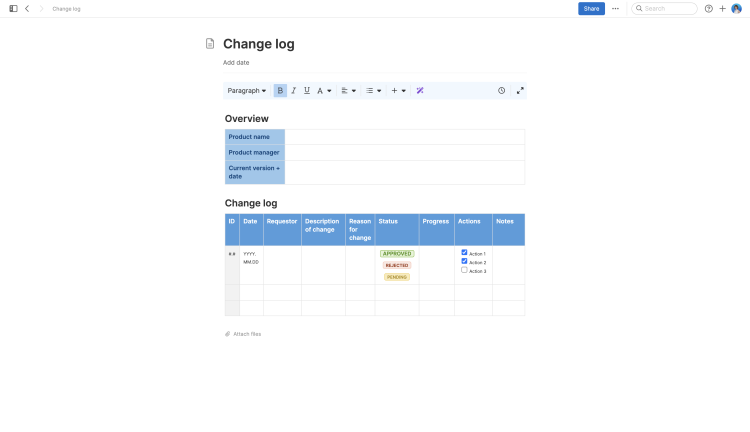
Sprint planning template
When you break down major projects into manageable buckets of work, add them to a sprint planning template. A template like this makes it quick to organize upcoming work items in a visual format. Simply adjust the terminology for agile project management (e.g., change "User stories" to "Deliverables"), and you will be ready to go.
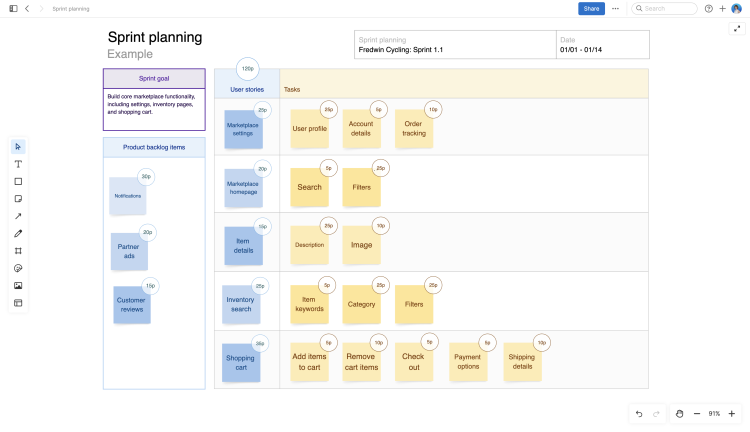
Browse more templates for project managers — including a decision log template and sprint retrospective template — all available in Aha! software.
